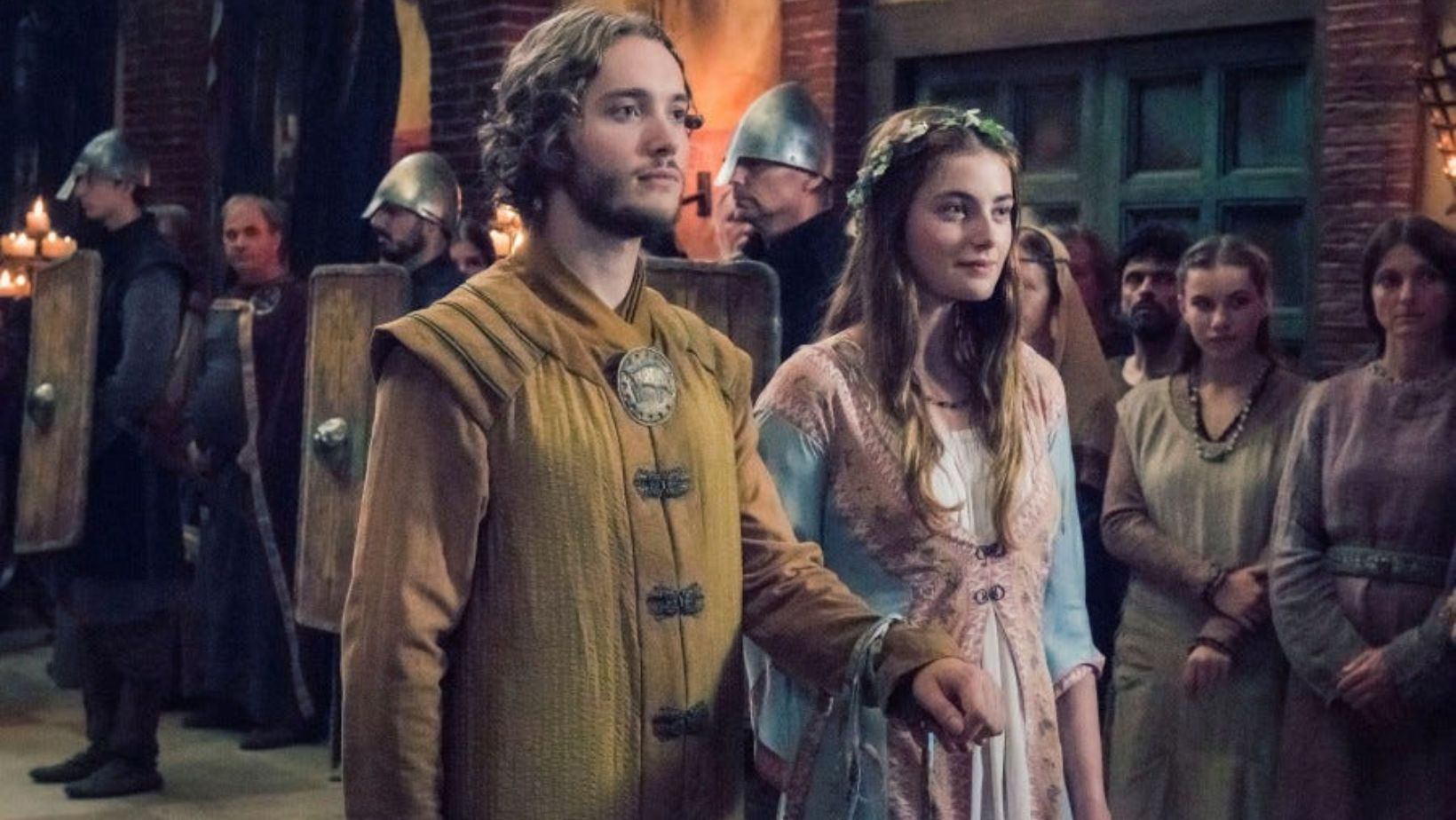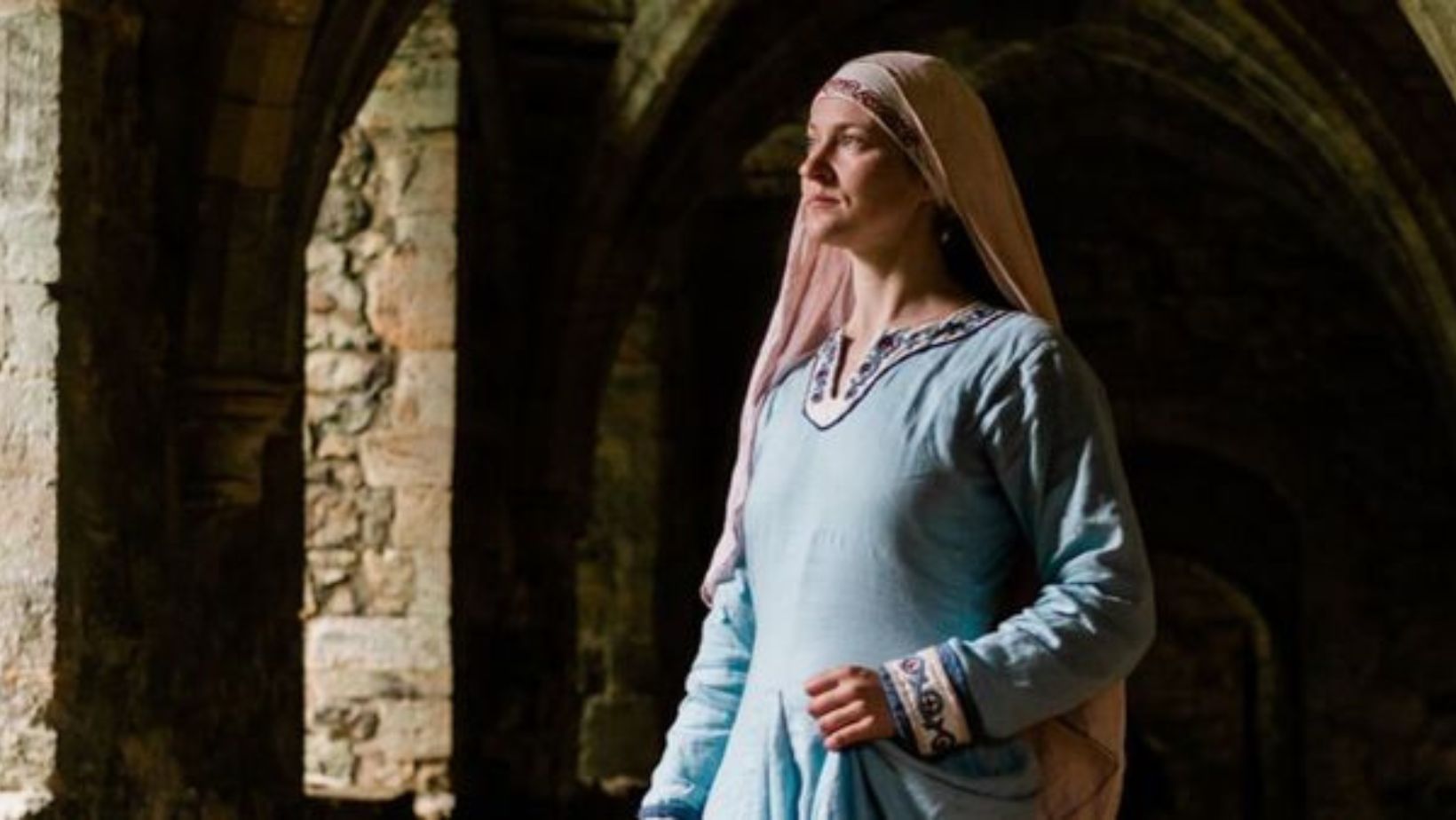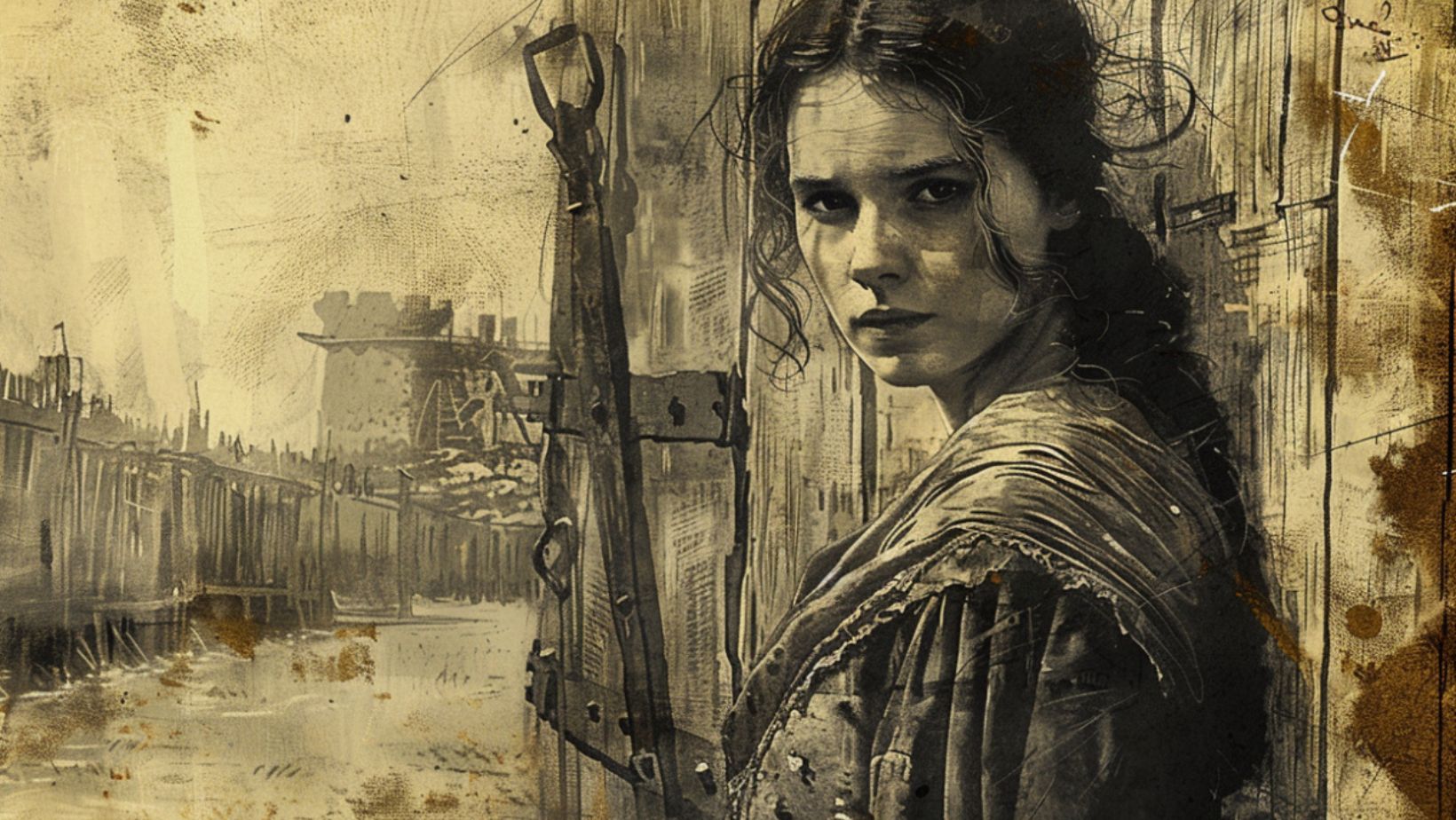Aethelflaed was no ordinary woman. In a time when men dominated the battlefield and the throne, she rose as a fierce and fearless leader. Known as the Lady of Mercia, Aethelflaed took charge when others doubted a woman’s strength. Her name became synonymous with courage, strategy, and power. As the daughter of Alfred the Great, she had leadership in her blood, but it was her own resilience that made her a legend. Aethelflaed wasn’t just a ruler; she was a warrior queen who defended her land against Viking invasions and united kingdoms. Her story is one of determination, bravery, and triumph.
Early Life and Royal Lineage
Aethelflaed was born around 870 AD into the powerful Anglo-Saxon royal family. Her father, King Alfred the Great, was one of England’s most renowned kings, known for defending his kingdom against Viking invasions. As the eldest child, she was raised in a world where politics, warfare, and survival were everyday concerns. Her noble birth meant she was destined for a life of influence and responsibility.
Growing up in Alfred’s court, Aethelflaed received an education that was rare for women of her time. She learned about leadership, strategy, and diplomacy, essential skills for navigating a turbulent era. This environment exposed her to the complexities of ruling a kingdom. It also shaped her into a capable leader.
Her upbringing was steeped in stories of battle and resistance against Viking threats. She witnessed firsthand how her father defended Wessex, the last Anglo-Saxon stronghold. These experiences instilled in her a deep understanding of military tactics and governance. They also prepared her for her future role as a leader.
Aethelflaed’s royal lineage and unique upbringing set her apart. Unlike many women of her time, she was ready to step into a leadership role. This early training laid the foundation for her future as a warrior queen.
Marriage and Alliance with Mercia
Aethelflaed married Aethelred, the Lord of Mercia, around 886 AD. This union wasn’t just a personal one; it was a strategic alliance between Wessex and Mercia. By marrying Aethelred, she helped strengthen ties between the two powerful kingdoms. This partnership was crucial in the fight against Viking invasions, uniting their forces against a common enemy.
Her marriage introduced Aethelflaed to the complexities of ruling a kingdom. As Aethelred’s health declined, she gradually took on more responsibilities in governing Mercia. She learned how to manage political affairs, lead armies, and make important decisions. These experiences were invaluable in shaping her into a capable ruler.
Aethelflaed didn’t just act as Aethelred’s wife; she became his partner in leadership. She built relationships with Mercian nobles, earning their respect and trust. This established her authority and influence, even while her husband was still alive. Her involvement in governance ensured a smooth transition when she eventually took over as the sole ruler.
The marriage was more than an alliance; it was a training ground for her future leadership. It gave her the experience, connections, and confidence she needed. This prepared her to lead Mercia on her own after Aethelred’s death.
Aethelflaed’s Path to Power: Becoming the Lady of Mercia

As Aethelred’s health began to decline in the early 900s, Aethelflaed gradually took on more leadership duties in Mercia. Aethelred could no longer manage military campaigns or handle the kingdom’s affairs. Aethelflaed stepped in, commanding troops and overseeing Mercia’s defenses against Viking threats. Her actions earned her respect and loyalty from both the military and the Mercian people.
When Aethelred passed away in 911, she was ready to lead. Unlike most women of her time, she didn’t simply fade into the background. Instead, she was recognized as the “Lady of Mercia,” taking on full authority over the kingdom. This was unprecedented, as female rulers were extremely rare in Anglo-Saxon England.
Aethelflaed’s rule was accepted by the Mercian nobility, a testament to her proven leadership skills. She continued to lead military campaigns, fortify towns, and protect Mercia from Viking raids. Her strategic vision helped Mercia become a formidable force against its enemies. Under her leadership, the kingdom not only survived but thrived.
Her ascension marked a turning point for Mercia, proving that she was more than capable of ruling alone. Aethelflaed became a symbol of strength, guiding her people with wisdom and courage.
Military Campaigns Against the Vikings
Aethelflaed proved herself as a brilliant military strategist in defending Mercia against Viking invasions. She launched several campaigns to push back Viking forces, showing remarkable tactical skill. One of her most significant victories was the capture of Derby in 917, making her the first Anglo-Saxon ruler to reclaim a major Viking stronghold. This victory weakened Viking power in the Midlands and boosted Mercian morale.
She didn’t stop there. Aethelflaed also led the successful capture of Leicester, another crucial Viking-held town. These victories forced the Viking army to retreat, significantly reducing their threat. Her relentless efforts protected Mercia and turned the tide in favor of the Anglo-Saxons.
Aethelflaed was not just a battlefield leader; she also focused on strengthening Mercia’s defenses. She fortified key towns such as Warwick, Tamworth, and Stafford, turning them into strongholds against Viking attacks. These fortified towns, known as burhs, acted as defense points and centers of trade and administration. This strategy ensured that Mercia remained secure and prosperous.
Her military campaigns were a blend of offense and defense. Aethelflaed’s actions proved she was not only a ruler but a formidable warrior. Her leadership was crucial in keeping Mercia safe from Viking dominance.
Aethelflaed the Builder: Fortifications and Urban Development
Aethelflaed was not just a warrior; she was a visionary builder. She understood the importance of securing Mercia against Viking attacks and focused on constructing and strengthening burhs, or fortified towns. These burhs served as defensive strongholds, protecting the population from raids. They also acted as administrative centers, allowing Mercia to maintain order and stability.
She strategically placed these burhs at key locations, ensuring they could respond quickly to Viking threats. Towns like Warwick, Tamworth, and Stafford were transformed into well-fortified centers with strong walls and watchtowers. These fortifications made it difficult for Viking forces to penetrate Mercian territory. As a result, they helped create a safer environment for the people.
The burhs also contributed to Mercia’s prosperity. They became hubs for trade and commerce, attracting merchants and craftsmen. This boosted the local economy and allowed Mercia to thrive despite the constant threat of invasion. Aethelflaed’s efforts in urban development made Mercia more resilient and economically stable.
Her building projects showed her foresight as a leader. By fortifying towns and enhancing their role as trade centers, she ensured Mercia’s long-term security and growth. Aethelflaed’s legacy as a builder is as significant as her military achievements.
Alliances and Diplomacy: Uniting the Anglo-Saxon Kingdoms
Aethelflaed was not just a warrior; she was a skilled diplomat. She knew that uniting the Anglo-Saxon kingdoms was essential to resist the Viking threat. As the Lady of Mercia, she maintained a strong alliance with her brother, King Edward of Wessex. This partnership was crucial in coordinating military campaigns and sharing resources against their common enemy.
Aethelflaed extended her influence beyond Wessex. She built alliances with other Anglo-Saxon territories, fostering a sense of unity against the Viking invaders. Her diplomatic efforts encouraged cooperation among rival kingdoms, creating a stronger and more unified front. This unity played a key role in repelling Viking advances and regaining lost lands.
One of her significant achievements was gaining the loyalty of the Welsh princes. They agreed to support her campaigns, providing additional forces against Viking raids. This expanded the Anglo-Saxon coalition, making it more formidable. Aethelflaed’s ability to form these alliances greatly enhanced her kingdom’s military strength.
Her diplomatic skills helped pave the way for the eventual unification of England. Aethelflaed demonstrated that collaboration was just as powerful as combat. Her alliances laid the groundwork for a stronger, united Anglo-Saxon resistance, ensuring the survival of their kingdoms.
The Liberation of Derby and Leicester: Aethelflaed’s Greatest Victories
Aethelflaed achieved two of her greatest victories by liberating the cities of Derby and Leicester from Viking control. In 917, she led a daring campaign to reclaim Derby, one of the Five Boroughs under Viking rule. The battle was fierce, and Aethelflaed lost some of her most trusted warriors. Despite this, her forces managed to drive out the Vikings, marking a significant turning point in the fight against them.
Her success didn’t stop there. In 918, she turned her attention to Leicester, another key Viking stronghold. The city surrendered without a fight, recognizing her strength and authority. This swift victory demonstrated her military prowess and strategic brilliance.
These conquests solidified her reputation as a formidable and fearless leader. She became the first Anglo-Saxon ruler to take back major towns from the Vikings, proving her effectiveness in warfare. Her victories inspired other Anglo-Saxon leaders and strengthened the resolve to resist Viking domination. They marked her as one of the most capable military leaders of her time.
Aethelflaed’s success in Derby and Leicester was more than just territorial gains. It proved that the Vikings could be defeated. Her leadership became a beacon of hope for a united Anglo-Saxon resistance.
Aethelflaed’s Legacy: Shaping England’s Future
Aethelflaed played a crucial role in the unification of England. Her leadership in Mercia laid the groundwork for future collaboration with Wessex, contributing to a more unified Anglo-Saxon kingdom. After her death, her efforts helped pave the way for her brother, King Edward, to merge Mercia and Wessex, a step toward a united England. Her achievements showed that strong, effective leadership could come from women, influencing the kingdom’s path forward.
Her legacy also inspired future monarchs, especially female rulers. Aethelflaed proved that women could govern, lead armies, and shape history just as effectively as men. This example echoed through the centuries, encouraging other women to take on leadership roles in medieval Europe. Queens like Matilda of Flanders and Eleanor of Aquitaine found inspiration in her story.
Aethelflaed’s ability to command respect in a male-dominated society set a powerful precedent. She demonstrated that courage, wisdom, and strength were not limited by gender. Her legacy as the “Lady of Mercia” lives on as one of England’s earliest and most successful female rulers. Through her influence, Aethelflaed helped shape the course of English history and left an enduring mark on medieval leadership.
Death and the End of an Era

Aethelflaed died in 918 AD, marking the end of an era for Mercia and Anglo-Saxon England. Her health had been declining for some time, likely due to the stresses of leadership and the demands of constant warfare against the Vikings. She passed away in the city of Tamworth, where she had made significant contributions to its defenses. Her death was a considerable loss to her people, who had come to rely on her strength and leadership.
After her passing, the transition of power in Mercia was crucial. Aethelflaed had prepared her daughter, Aelfwynn, to succeed her, but her authority was not fully accepted. Aelfwynn’s reign was short-lived, as Mercia was soon absorbed into Wessex under the rule of her brother, King Edward. This marked a significant shift in the political landscape of England.
The merging of Mercia and Wessex under Edward’s rule changed the power dynamics of the region. Aethelflaed’s efforts to unite the kingdoms laid the groundwork for a stronger England. However, her death also highlighted the fragility of female leadership in a male-dominated society. Despite this, her legacy lived on, influencing future generations and shaping the unification of England.
Aethelflaed in Historical Memory and Popular Culture
Aethelflaed has been remembered as a significant figure in both historical accounts and literature. Chroniclers like Asser and the Anglo-Saxon Chronicle highlighted her military accomplishments and leadership qualities. These records established her legacy as a strong ruler who played a vital role in defending England against Viking invasions. Over the centuries, her story has continued to resonate, influencing various historical narratives.
In modern media, Aethelflaed’s portrayal has evolved. She appears in television series, novels, and historical fiction, often depicted as a fierce warrior and skilled diplomat. Shows like “The Last Kingdom” highlight her character, emphasizing her strength and determination. These representations help bring her story to a contemporary audience, showcasing her influence in shaping England’s history.
Aethelflaed’s legacy inspires women and leaders today. Her achievements demonstrate that gender should not define one’s capabilities in leadership and warfare. As more people discover her story, Aethelflaed becomes a symbol of empowerment and resilience. Her historical memory serves as a reminder of the important roles women have played throughout history, encouraging ongoing discussions about female leadership in all spheres of life.
Conclusion: Aethelflaed
Aethelflaed’s contributions to the history of England are monumental. As the Lady of Mercia, she successfully defended her kingdom against Viking invasions, solidified alliances, and strengthened fortifications, shaping the course of early medieval England. Her military and diplomatic skills laid the groundwork for the eventual unification of England under her brother, King Edward.
Aethelflaed’s significance as a trailblazer for female leadership cannot be overstated. In a time when women had limited power, she rose to prominence, proving that capable leadership knows no gender. Her legacy continues to inspire generations, reminding us of the vital roles women have played throughout history.
FAQs
What was Aethelflaed’s relationship with King Alfred the Great?
Aethelflaed was the daughter of King Alfred the Great of Wessex. Her upbringing in a royal court influenced her strong leadership qualities. She inherited her father’s values of resistance against Viking invaders and governance.
How did Aethelflaed contribute to the cultural landscape of her time?
Aethelflaed played a role in promoting the Christian faith in Mercia, supporting the establishment of monasteries and churches. This helped to foster a sense of cultural identity and stability in her kingdom during turbulent times.
What were the specific roles and duties of Aethelflaed as the Lady of Mercia?
As the Lady of Mercia, Aethelflaed was responsible for the governance of the region, leading military campaigns, and managing alliances. She also oversaw the defense and fortification of towns, ensuring the security and prosperity of her people.
Did Aethelflaed have any children? What happened to them?
Yes, Aethelflaed had one daughter, Aelfwynn, who was briefly the ruler of Mercia after Aethelflaed’s death. However, Aelfwynn’s reign was short-lived as Mercia was soon incorporated into Wessex under her uncle Edward’s rule.
How has Aethelflaed been commemorated in modern times?
Aethelflaed has been honored through various monuments, statues, and historical sites, particularly in Mercia. Her legacy is celebrated in literature, films, and television shows, highlighting her role as a warrior queen and a pioneer for women in leadership.

